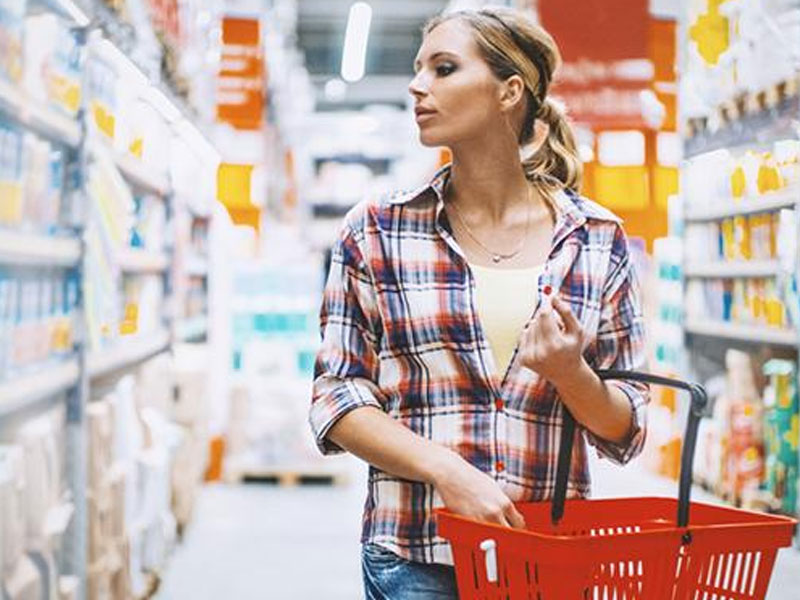Hybrid AI-powered computer vision combines physics and big data
SOURCE: HTTPS://WWW.SCIENCEDAILY.COM/
AUG 14, 2023
How Computer Vision will transform stores to help retailers beat Amazon
SOURCE: RISNEWS.COM
SEP 09, 2021

Retailers are still reeling from the impact of COVID-19, which will have long-term effects on how people shop. A survey of 1,000-plus consumers that Standard conducted in November 2020 about their holiday shopping plans found that:
On the plus side, 31 percent said they would be more likely to shop in physical stores in stores that offered a checkout-free experience. This option existed prior to March 2020 — but its adoption by retailers was greatly accelerated by the pandemic. Consumer preferences are changing rapidly.
Even before the pandemic, brick-and-mortar retailers were struggling to draw people into stores and away from e-commerce. Competing with Amazon is a daily challenge. Retailers know that they have to create an amazing experience for shoppers in order to get them into stores.
Checkout-free technology has emerged as a great way to do that. A checkout-free experience eliminates the worst part of in-store shopping: waiting in line.
There are two ways to go about implementing a checkout-free experience: build new stores or retrofit existing stores. Given that the number of existing stores dwarfs the number of planned new store builds by about 100:1, retrofits are by far the more popular option.
The problem is that many of the vendors developing checkout-free technology — like Amazon, for instance, with its Amazon Go solution — are building systems that rely on custom hardware such as sensored shelves. Rolling out a solution like that requires retailers to essentially gut their stores and install all new shelving throughout. It’s an expensive approach that also forces months-long store closures.
Very few retailers are in a position to close their stores and make that kind of investment, especially right now. The specialized hardware also makes it difficult for store managers to change up promotions, as moving items requires that sensors be re-programmed. Once installed, the store layout is fixed and rigid.
Maintenance of these systems is also an issue — with thousands of sensors in a store, on any given day there is a chance that a few of them will fail, requiring IT staff to replace them quickly or risk inaccurate charges for customers. The more hardware that’s involved, the more maintenance is required.
Another class of checkout-free tech relies solely on computer vision — cameras installed on ceilings — to eliminate checkout. Store retrofits are relatively simple and can often be completed at night when stores are closed anyway. A 1,000-square-foot store can be retrofitted quickly with a dozen or so cameras and a server in a back room. Much less hardware means much less maintenance, and most can be done remotely.
Computer vision means essentially computers that can see. Without using any biometrics, such as facial recognition, the cameras and software can detect who has what, even when they put something back, so a person can be accurately charged when they leave the store.
Computer vision also enables retailers to eliminate manual inventory taking and instead take instant snapshots of storewide inventory, even capturing items that have been put away in the wrong place. That in turn leads to much more accurate inventory data, which helps avoid the stockouts that are so frustrating for shoppers and helps store staff find items for customers more quickly.
These checkout-free systems can be integrated with existing stores systems such as POS and back-end inventory ordering software. They also play a role in order pickup (in-store or curbside) and delivery, ensuring no stockouts because inventory is accurate and up to date.
What kind of experiences does this computer-vision driven experience provide? Imagine taking a physical space and treating it like a digital space — even making it instantly searchable and providing analytics to retailers on par with what they can get from e-commerce environments.
The chief benefit is removing the friction of checkout for shoppers and eliminating those checkout lines. Retailers can then use that valuable front-of-store real estate for other things, such as seasonal promotions.
In convenience stores, checkout-free technology enhances the convenience factor. In urban settings, a c-store becomes the customer’s personal pantry: Just walk in, grab what you need, and walk out without stopping to pay or scan anything.
Traditional grocery store trips will also be transformed. You can still come in with your list, but an app will tell you where everything is, whether it’s in stock, and remind you of other things you might need based on past trips or what you’re buying now. Shoppers can bag their own items as they shop, and when they’re done simply walk out.
Store staff will be redeployed from traditional cashier stations to the floor, where they can help customers and keep shelves stocked. No more tedious inventory-taking assignments, because inventory will be continuously updated in real time via cameras and software. Managers can get accurate inventory snapshots whenever they want.
The most visible transformation in this checkout-free scenario is the absence of the traditional checkout lanes at the front of the store. While some stores may be equipped for kiosks for customers wanting to pay with cash or a card, the vast majority of checkout stations will be gone. Retailers can use that valuable real estate in a number of ways: promoting impulse items, weekly or daily specials, or special brand appearances.
Computer vision drives all of this, untethering checkout from a single physical spot and eliminating checkout lines. The end game is much better customer experience — they can find items more easily, take advantage of in-store promotions, and get in and out more quickly without waiting in lines.
LATEST NEWS
Artificial Intelligence
Eerily realistic: Microsoft’s new AI model makes images talk, sing
APR 20, 2024
WHAT'S TRENDING


Data Science
5 Imaginative Data Science Projects That Can Make Your Portfolio Stand Out
OCT 05, 2022

SOURCE: HTTPS://WWW.SCIENCEDAILY.COM/
AUG 14, 2023
SOURCE: INDIANEXPRESS.COM
OCT 24, 2022